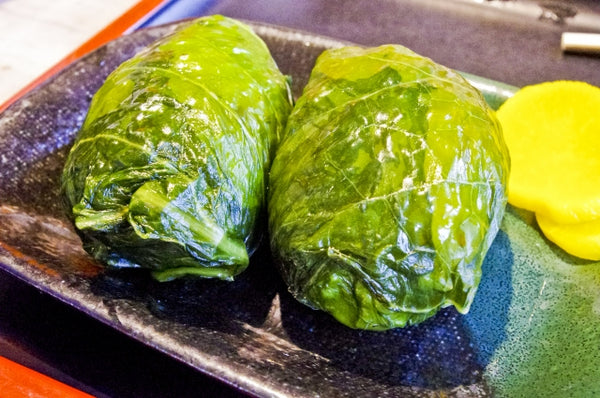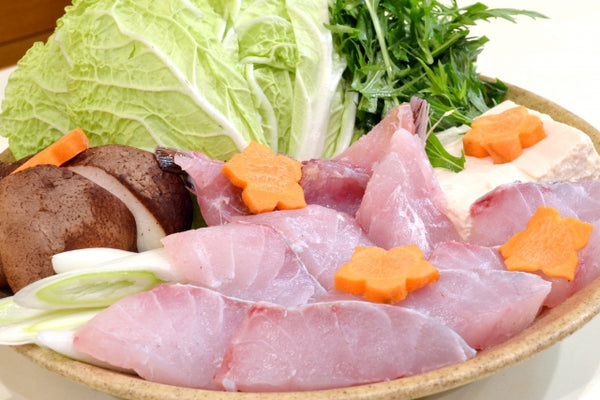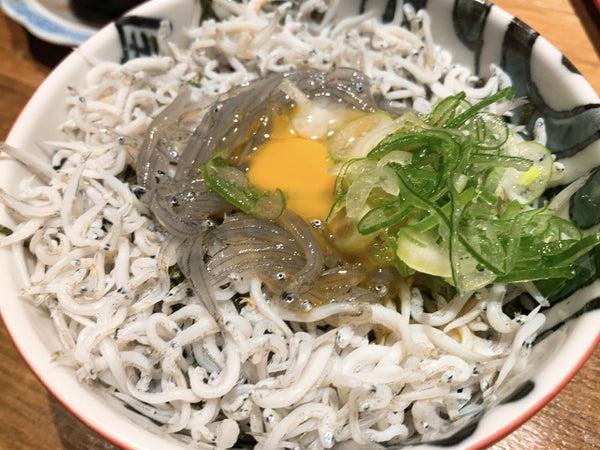Culinary Postcard: Exploring Wakayama's Specialties
Wakayama holds a special place in my heart, as it was my home during my time as an English teacher on the JET program. Located in the Kansai region just south of Osaka and Kyoto, Wakayama offers much to curious travelers, especially those interested in culture and cuisine. The prefecture boasts fresh seafood, abundant produce like plums and mikan, and traditional products such as soy sauce and miso.
Here are some of the most well-known dishes from this beautiful region:
Meharizushi
A local variant of onigiri, meharizushi consists of rice balls filled and wrapped with pickled takana (mustard leaves). Originating from the Kumano region, mountain and farm workers consumed them as bentos, providing energy for their day. Their impressive size and flavor purportedly earned them the name ‘mehari’, which conjures the image of one's eyes opening wide in delight.

Kue Nabe
Known as a “phantom” or “fabled” fish, the seldom-caught kue has the perfect amount of fat that makes for a light, balanced flavor. You can savor it as sashimi, deep-fried, or most notably, in a nabe stew, where the sweet fat infuses the stew with rich collagen.

Kumano Beef
Originating from the 8th-12th centuries when cows first arrived in Kumano from Kyoto, this wagyu brand is recognized for its tenderness and sweet, beautifully marbled fat.
Maguro
Wakayama is home to one of Japan’s largest maguro industries and boasts the highest number of bluefin tuna brought into port. In fact, there are even maps of maguro restaurants to visit in different towns throughout the prefecture. The Kuroshio market in Wakayama city is a must-visit, where you can see a whole tuna being expertly broken down.
Shoujinryouri
With a deep connection and history dating back 1200 years, the influence of Buddhist tradition is strong in Wakayama. One of the most prominent Buddhist centers, Koyasan, is located in the prefecture, along with many pilgrimage routes. Accordingly, shoujinryouri, a form of vegetarian Buddhist cuisine, can be found throughout the region and is served at the many temple stays that visitors can experience in Wakayama.
Wakayama Ramen
Known locally as “chuka soba” or Chinese soba, these noodles have a history dating back to before WWII. What makes this type of ramen unique are the thin, straight noodles and the two styles of broths: a soy sauce base and a tonkotsu base. Both are equally delicious with every shop serving it's own unique variation, but typical toppings include chopped green onions, menma (bamboo shoots), char siu (roast pork), and kamaboko fish paste.
Shirasu-don
Hailing from the town of Yuasa (a town also famous for its soy sauce production), shirasu-don is a bowl of warm rice topped with shirasu, or whitebait fish. Some shops season their bowls with local soy sauce, while others garnish theirs with local miso. However shirasu-don is prepared, it can be an interesting challenge for daring eaters.

Tenkake Ramen
Tenkasu are the crunchy fried bits left over after making tempura. In this simple preparation of ramen, tenkasu, wakame seaweed, chopped green onions, and pickled ginger are generously garnished atop a bed of thin straight noodles soaking in a light soy-based broth.
Sechiyaki
At first glance, sechiyaki might appear to be okonomiyaki, but it’s actually a special regional preparation of yakisoba hailing from the town Gobo. Topped with okonomi sauce, mayo, and aonori just like okonomiyaki, you’ll find something special inside the fried noodles. Surprisingly, it isn’t cabbage or bacon or cheese, but a perfectly round egg hiding inside! The name for this dish comes from the local Gobo word “sechigau” or to do messily or disorderly.

Hanasaka Yakimochi
Originating from Koyasan, these sweet mochi are filled with red bean paste and flattened before being toasted on both sides until warm and aromatic. A local fable tells the story of an old woman who gave hanasaka mochi to monks journeying through the region. Nowadays, eating hanasaka mochi is a tradition for travelers trekking to Koya, offering a sweet respite from fatigue.
I hope this overview of Wakayama's vibrant food culture inspires you to explore this remarkable region and its many offerings.
About the Author:
 Kevin Kilcoyne
Kevin Kilcoyne




